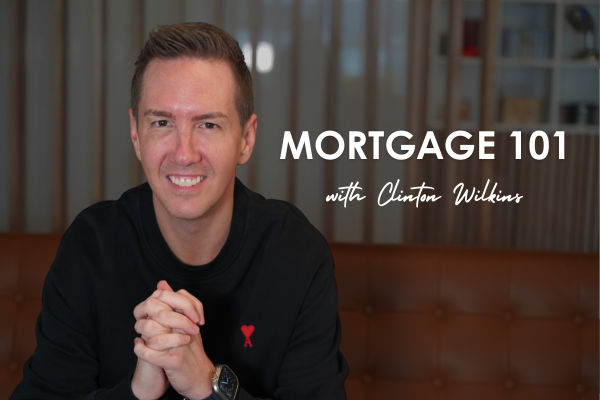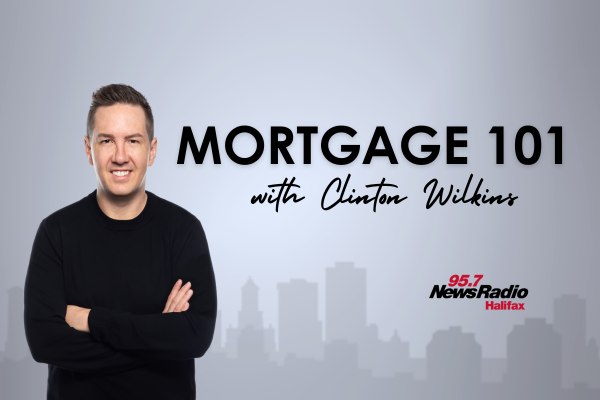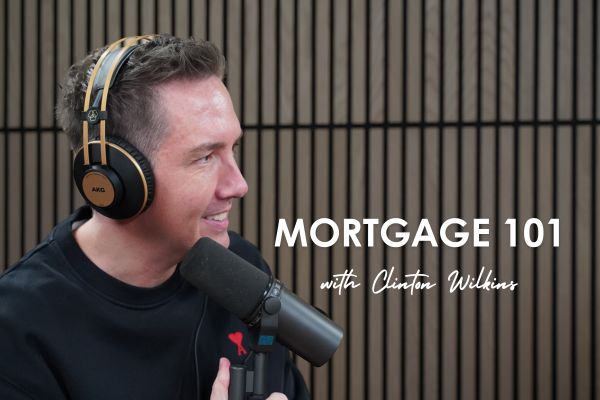Todd Veinotte and Clinton Wilkins discuss the evolving landscape of mortgage lending, highlighting its complexities and the importance of staying informed.
Mortgage 101 – No-frills mortgages | May 2021 Part 2
In this episode of Mortgage 101 with Clinton Wilkins and Todd Veinotte, as heard on News 95.7, the guys talk about no-frills mortgages, fixed vs variable rates, and why they make the Mortgage 101 show.
Mortgage 101 with Clinton Wilkins & Todd Veinotte – May 2021 – Part 2
Don’t feel like watching the video? Check out the transcript below.
Transcript:
Welcome to part two of May’s Mortgage 101!
Todd Veinotte: [00:00:04.98] We are back on News 95.7, it’s Mortgage 101, Your Guide to Homeownership, with Clinton Wilkins and myself, Todd Veinotte.
Clinton Wilkins: [00:00:12.78] Have to say, that sounds like a song you play during your normal work week on News 95.7.
Todd Veinotte: [00:00:18.21] I do. I do play it.
Clinton Wilkins: [00:00:19.73] I think I’ve heard you play this one before.
Todd Veinotte: [00:00:21.81] When sitting in for Rick. Absolutely. That’s, that’s cool. You got to like it, right? Yeah. I’m on a kick.
Clinton Wilkins: [00:00:27.24] I think it does kick. And you know what I like Foreigner. You know, I really like all of these, like I’m going to say it’s an 80s band.
Todd Veinotte: [00:00:35.43] You know, the song’s called, no their a 70s band.
Clinton Wilkins: [00:00:37.71] Oh, 70s? Okay.
Todd Veinotte: [00:00:38.28] You know the song’s called Dirty White Boy. And you know what the subject matter is about?
Clinton Wilkins: [00:00:43.80] I have no idea. I think it’s probably like something like that’s very 70s inspired.
Todd Veinotte: [00:00:51.09] Yeah, we’ll leave it at that.
Clinton Wilkins: [00:00:52.11] Yeah, we’ll leave it at.
Todd Veinotte: [00:00:53.13] It’s a family show.
Clinton Wilkins: [00:00:54.48] It is a family show. And I thank everybody for tuning in.
Todd Veinotte: [00:00:57.57] Yeah, absolutely.
Clinton Wilkins: [00:00:58.58] And it’s Saturday.
Todd Veinotte: [00:01:00.03] And Sunday.
Clinton Wilkins: [00:01:01.02] And Sunday.
Todd Veinotte: [00:01:01.74] At the same time!
Clinton Wilkins: [00:01:02.55] You know what? It’s Saturday and Sunday. And you’re listening to us here live on News 95.7. And you know what? Really thank you for tuning in.
Todd Veinotte: [00:01:10.50] We’re not live.
Clinton Wilkins: [00:01:11.97] Well, you know,
Todd Veinotte: [00:01:13.05] We pre-recorded this. Let’s not try and,
Clinton Wilkins: [00:01:14.52] You’re listening to us live.
Todd Veinotte: [00:01:16.35] Yeah.
Clinton Wilkins: [00:01:16.68] I think that’s really what matters.
Todd Veinotte: [00:01:18.03] If you’re listening right now. You’re alive.
Clinton Wilkins: [00:01:19.86] You are alive. And you can also stream us on the News 95.7 website.
Why make these podcasts?
Todd Veinotte: [00:01:25.53] Yeah. Why do you enjoy doing this so much, these podcasts? Because you really, you and I have been, I don’t know how many shows we’ve done collectively Facebook live streams. I mean, we’ve, we’ve done a lot.
Clinton Wilkins: [00:01:34.56] We’ve done a lot of shows. Yeah.
Todd Veinotte: [00:01:35.94] So obviously you see the value in it, but you enjoy it as well because I think you truly enjoy helping and educating people beyond the business component to it, right?
Clinton Wilkins: [00:01:47.52] You know what? I could enjoy my weekends and I could just, you know, not do this. But here’s the thing. I think education is so important. And I think this is such a great medium to get the word out and you know what? We can talk about really relevant issues around, you know, mortgage lending, around real estate, around the market. And, you know, that’s really important to people. And I think this is a very unique show that we do. And I don’t think this show really happens anywhere else. I don’t know any other market, at least across our country and maybe even the U.S. that does a show around mortgage lending.
Todd Veinotte: [00:02:28.84] And a lot of them.
Clinton Wilkins: [00:02:29.95] And a lot of shows. A show every month. So you know what? Thank you for tuning in. Thank you for continuing to tune in on the weekend. And I know that the radio is maybe not live on the weekend like it once was on News 95.7. And I think that we’ve a lot of people who are now tuning in to listen to our show, which I think is really cool.
Mortgage rates
Todd Veinotte: [00:02:49.47] Yeah, for sure. All right. So some, one thing that when people think mortgage is one of the, one of the first things people think of as rate, and probably that’s a good thing, but it’s also it’s not the be all and end all, but some people doing the drive by shopping for a mortgage would go to the lowest rate. That’s where I’m buying. And that’s got value. But that’s, there’s much more to it than that.
Clinton Wilkins: [00:03:11.41] And some, and sometimes the lowest rate isn’t the best rate, Todd. And I think that’s sometimes what people get wrapped up in. And you know what I’m all about being competitive. I really do believe that this is a very competitive industry and sometimes the lowest rate is really what sells. But is it always the best rate? And I’m not convinced. And I work in the industry. And I can tell you that sometimes we hear from consumers that there may be some lower rate offers out there. And one consumer told me that customer service or their experience or the advice that I’m giving is not mutually exclusive to the very best rate that they can get. So I told the consumer, I’m like, okay, your expectation and the reality are just so far apart, which it really is. You know, I think people really need to understand that what we do is obviously very, very important in the economy. And it’s very, very important for people for homeownership. And it’s very, very important to continue transactions moving along. And I’m saying that, I’m not saying that we’re the be all and end all. I’m not. But I do feel that we do a lot of transactions. And I think then we’re really able to give that advice. But we’re also really able to give a very aggressive price. And I think 99 per cent of the time we are one of the lowest, if not the lowest in terms of price point. But it’s just not all about price.
Todd Veinotte: [00:04:45.49] Ok, so obviously most times you want to give somebody the lowest rate. Yeah. People, that resonates with people. You can pay $490 biweekly or $520 biweekly.
Clinton Wilkins: [00:04:58.05] Right.
Todd Veinotte: [00:04:58.06] So, but there are sometimes the $520 is a better option. Why?
Clinton Wilkins: [00:05:01.90] I will tell you why. One may be the turnaround time. You know, I’ve heard sometimes there are some no-frills lenders that take a very long time for you to get approved and then get funded. That is not advantageous when you’re in a market like you are here in Nova Scotia. Things happen quickly and the quicker things move, the more complex it is. And we want to make sure you’re protected and we want to make sure that we’re funding on time. So that’s one reason. The second reason is sometimes the lower rate products mean that you’re in a no-frills product and that no-frills product could be very restrictive. So if you want to break the mortgage early, you could pay a much larger penalty to get out. And at the end of the day, that could cost you a lot more money than maybe having a slightly lower interest rate. And often times we’re not talking about, you know, one per cent lower.
No-frills mortgages
Todd Veinotte: [00:05:52.33] Who’s selling these no-frills mortgages?
Clinton Wilkins: [00:05:55.99] A lot of lenders, including the big banks.
Todd Veinotte: [00:05:58.41] Yeah.
Clinton Wilkins: [00:05:59.65] And you know what? I don’t agree with it. I would rather a client pay 0.05 or 0.1 more in a rate. We’re talking like a couple bucks a month.
Todd Veinotte: [00:06:10.06] So they’re no-frills. They can do that because they don’t provide the customer service.
Clinton Wilkins: [00:06:14.65] It may not be the customer service, it may not be the prepayment privilege and may not be portability. You may not be able to break the mortgage early unless you have a bona fide arm’s length sell.
Todd Veinotte: [00:06:23.37] So they’re getting that money somewhere.
Clinton Wilkins: [00:06:25.30] They’re getting paid on that term. Until the term is up. When the term’s up you again, you’re a free agent. And, you know, I think it’s buyer beware. I would much rather lose the client to another lender than give a client a no-frills mortgage.
Todd Veinotte: [00:06:41.59] Oh is that right? You don’t sell them.
Clinton Wilkins: [00:06:43.00] You know what I would say we probably sell a handful a year. And I don’t think we sell anything, Todd, but we probably provide a mortgage that is one of these no-frills, maybe like, I’m talking like five out of the 680 transactions we did last year, it might have even been less than five. And for those clients, they were really super educated about what they were getting.
Todd Veinotte: [00:07:04.19] Yeah.
Clinton Wilkins: [00:07:05.17] And they made a decision that they would rather have a slightly lower rate and give up the flexibility. And these are usually not first time homebuyers. They’re usually people that are taking those funds out for investment purposes. Or maybe, you know, they’ve been in the house for several years and they know they’re not going anywhere. But you know what? Those people, a lot of stuff changes in people’s lives. People have health issues, loss of business, matrimonial breakdown. You never know what’s going to happen in life. And, you know, that’s why I think having the flexibility is more important than maybe just like a smidge of a better rate. A lower rate doesn’t mean it’s a better rate.
Buyer beware
Todd Veinotte: [00:07:44.45] So, again, it’s about education, you’ve got you say you’ve got a handful, every one of those people knew. You made sure they knew going into that this is the product, these are the disadvantages. And after that, if they say, look, I feel that that I’m educated, thanks for that, but I still want it, then you feel good about that, obviously.
Clinton Wilkins: [00:08:02.06] And here’s the thing. Twice this year, I’ve seen a client pay a much larger penalty than they needed to pay because they were in one of those products.
Todd Veinotte: [00:08:10.40] Your client?
Clinton Wilkins: [00:08:11.69] They weren’t our clients. They were clients that were coming to us after they already had this type of mortgage. And you know what? It’s a tough pill for us to swallow. I don’t always want to break the bad news to people. I want to be the you know, the I’m always giving the good news person. But in this business, sometimes I have to, like, tell people that they can’t get a mortgage or that they’re going to have a large penalty or whatever. And I don’t have control over the other lenders. We only know the type of product that we give and we only know the lenders that we use. So, you know, if you get a mortgage somewhere else and you’re breaking it, it’s buyer beware. And this is why I think a variable rate is so, so important. You can break it any time, three months interest. And I’m hearing from clients that some are scared of a variable. I can tell you variable is always better, and historically clients do better on a variable rate, and I think variable prepares you for the future.
Fixed vs variable rates
Todd Veinotte: [00:09:12.27] Wow, that’s a catch phrase, you should put that outside of your building: “Variable prepares you for the future.” What do you think?
Clinton Wilkins: [00:09:17.58] I think today it’s definitely the way. Yeah, when COVID first really happened, Todd, the rate spiked and then the fixed rates really went to the floor. Clients at that time were getting fixed rates at about 1.5 per cent. Those don’t exist today. A good fixed rate today is around two per cent, 2.25, something like that. And yeah, it certainly is not a direction that majority of the clients are going today.
Todd Veinotte: [00:09:44.24] All right, so we’ve got more to talk about in the next half hour. Anything in particular that you want to give a tease? What do you think?
Clinton Wilkins: [00:09:50.42] Well, you know, I think there’s still lots of clients that are wanting to get pre-approved. And I think we should certainly talk about that. And we can maybe talk about what does the process look like once you have a preapproval and then you’re negotiating for a new property and once you have the offer, what the process looks like.
Todd Veinotte: [00:10:07.82] And maybe I might derail that, too, which I do that some time.
Clinton Wilkins: [00:10:10.85] I mean, you do what you want to do.
Todd Veinotte: [00:10:13.85] All right. We’ll be right back. Mortgage 101, Your Guide to Homeownership with Clinton Wilkins and myself, Todd Veinotte on News 95.7. We’ll be back.
If you have any questions, get in touch with us at Clinton Wilkins Mortgage Team! You can call us at (902) 482-2770 or contact us here.


